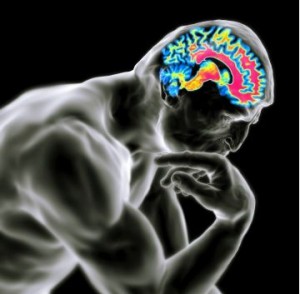life as a creative process
thinking about thinking
Just as the heart ceaselessly beats, the mind ceaselessly thinks. All day, everyday, our minds are busy processing information, developing explanations, replaying the past, imagining the future, interpreting reality, assigning value, creating stories,  producing images, having insights, exploring perceptions, asking questions, arguing positions, and on and on. In fact, at no time is the mind turned off. Even during sleep it continues to do what it does in the form of dreaming. Thinking is not something we do here and there; it is a fundamental animating principle of human life itself and is occurring at all times in the foreground and/or background of our lives.
producing images, having insights, exploring perceptions, asking questions, arguing positions, and on and on. In fact, at no time is the mind turned off. Even during sleep it continues to do what it does in the form of dreaming. Thinking is not something we do here and there; it is a fundamental animating principle of human life itself and is occurring at all times in the foreground and/or background of our lives.
Much of this thinking is automatic. David Eagleman, Assistant Professor of Neuroscience at Baylor College of Medicine, writes, “The first thing we learn from studying our [brain] circuitry is a simple lesson: most of what we do and think and feel is not under our conscious control.” In other words, most of our habits of thought operate on a subconscious level – just outside of our conscious awareness – and more often than not we remain oblivious to the dynamics and consequences of their presence. The automatic patterns and habits of thought we have in adulthood did not appear overnight or fall out of the sky. Like most of our personal habits, they have been with us for a while. They were built up over time and came into existence as a result of many interrelated and intersecting factors throughout childhood and adolescence. Of particular importance to the development of our personal thought patterns is the repetition of relational and emotional dynamics that we repeatedly experienced (and participated in) during what are commonly referred to as our formative years – the years from birth to adolescence.
our formative years
The hardware (brain and nervous system) and the software (habits of thought and emotion) of who we are literally comes into formation during childhood and adolescence; both are deeply influenced and shaped by our interactions within the social environments we grow up in. As we meander through those early years of life, we are conditioned into habitual ways of processing information and perceiving reality. By the time we are adults, we relate to these habits simply as givens. That is to say, we do not register the fact that our habits of perception came into existence via social and psychological processes, and that we maintain their existence (we continue to perpetuate them) via current social and psychological processes. It is useful in adulthood to recognize the createdness of our thought and emotional patterns because it helps us to see that, like all habitual activity, they continue to be created in our lives today, one day at a time, depending on what we prioritize, how we think, what we do and how we live.
brain plasticity
The ways in which we think about and interpret reality are not written in stone; learning and conditioning are life-long. Changing our minds, our hearts and our habits of living are possible at any age. Certainly we are much more malleable in childhood and adolescence, and certainly we come into young adulthood powerfully shaped by all that has transpired during those years, but we have the capacity for personal growth and transformation throughout our entire life span. As recent research in neuroscience (http://tinyurl.com/3c3meg9) is discovering, our “formative years” actually never end. Throughout life, we are forever “forming.” Each of us is a work in progress – in body, mind and spirit – as long as we live.
Given this reality, we are left with a question each of us must face:
How shall we live?
What makes most sense to me is to take what life gives us (“the raw material”) and to create. Sometimes alone. Mostly with others. But create. Always. Create. Your relationships. Your career, Your moods. Your perspectives. Create.